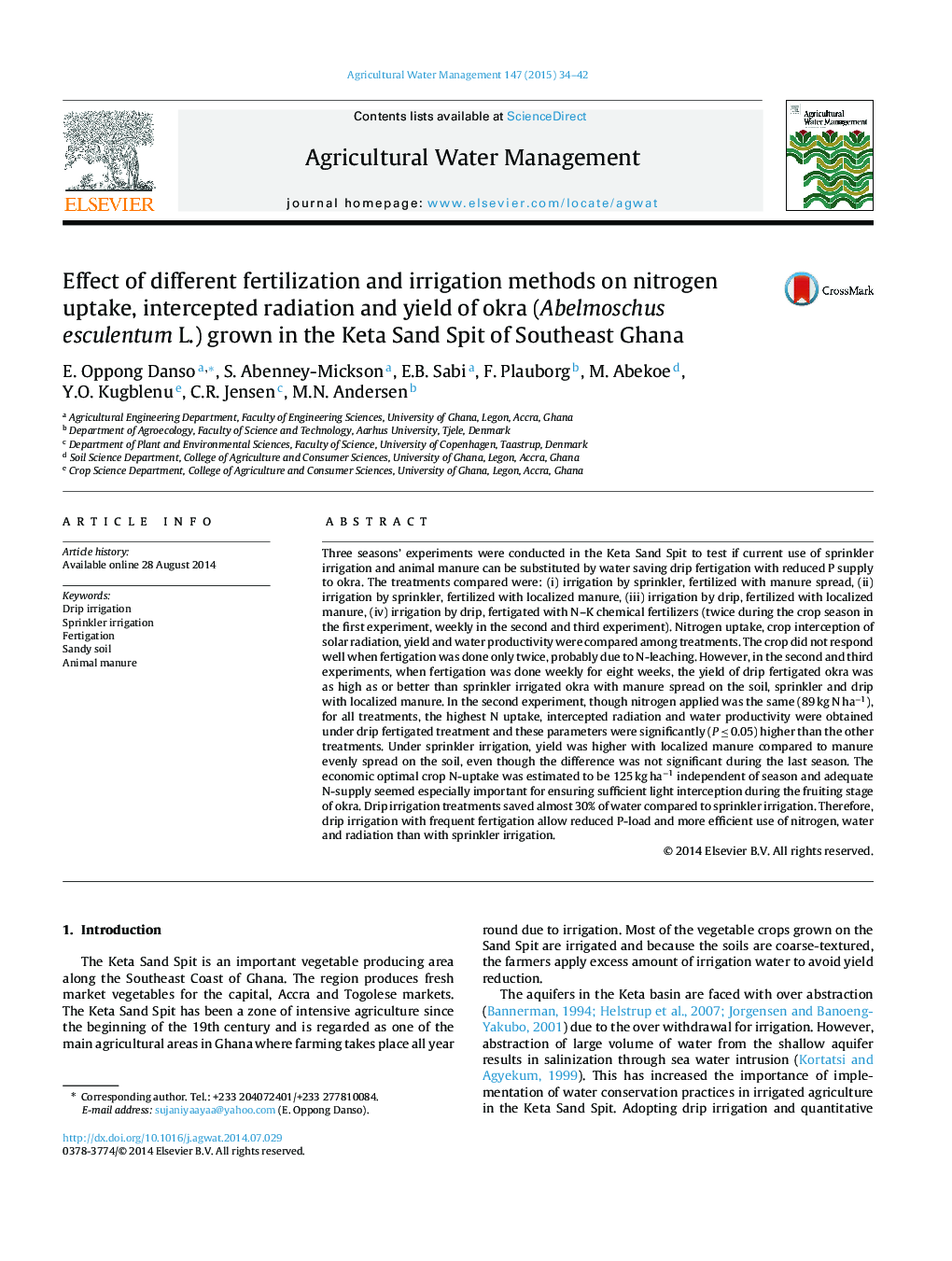| کد مقاله | کد نشریه | سال انتشار | مقاله انگلیسی | نسخه تمام متن |
|---|---|---|---|---|
| 4478572 | 1622932 | 2015 | 9 صفحه PDF | دانلود رایگان |

• The optimal rate of N-supply to okra was found to be 165 kg N ha−1 at a nitrogen use efficiency of 0.75.
• N-supply was important for ensuring light interception at the fruiting stage.
• Okra yield was largely dependent on N under well irrigated conditions.
Three seasons’ experiments were conducted in the Keta Sand Spit to test if current use of sprinkler irrigation and animal manure can be substituted by water saving drip fertigation with reduced P supply to okra. The treatments compared were: (i) irrigation by sprinkler, fertilized with manure spread, (ii) irrigation by sprinkler, fertilized with localized manure, (iii) irrigation by drip, fertilized with localized manure, (iv) irrigation by drip, fertigated with N–K chemical fertilizers (twice during the crop season in the first experiment, weekly in the second and third experiment). Nitrogen uptake, crop interception of solar radiation, yield and water productivity were compared among treatments. The crop did not respond well when fertigation was done only twice, probably due to N-leaching. However, in the second and third experiments, when fertigation was done weekly for eight weeks, the yield of drip fertigated okra was as high as or better than sprinkler irrigated okra with manure spread on the soil, sprinkler and drip with localized manure. In the second experiment, though nitrogen applied was the same (89 kg N ha−1), for all treatments, the highest N uptake, intercepted radiation and water productivity were obtained under drip fertigated treatment and these parameters were significantly (P ≤ 0.05) higher than the other treatments. Under sprinkler irrigation, yield was higher with localized manure compared to manure evenly spread on the soil, even though the difference was not significant during the last season. The economic optimal crop N-uptake was estimated to be 125 kg ha−1 independent of season and adequate N-supply seemed especially important for ensuring sufficient light interception during the fruiting stage of okra. Drip irrigation treatments saved almost 30% of water compared to sprinkler irrigation. Therefore, drip irrigation with frequent fertigation allow reduced P-load and more efficient use of nitrogen, water and radiation than with sprinkler irrigation.
Journal: Agricultural Water Management - Volume 147, 1 January 2015, Pages 34–42